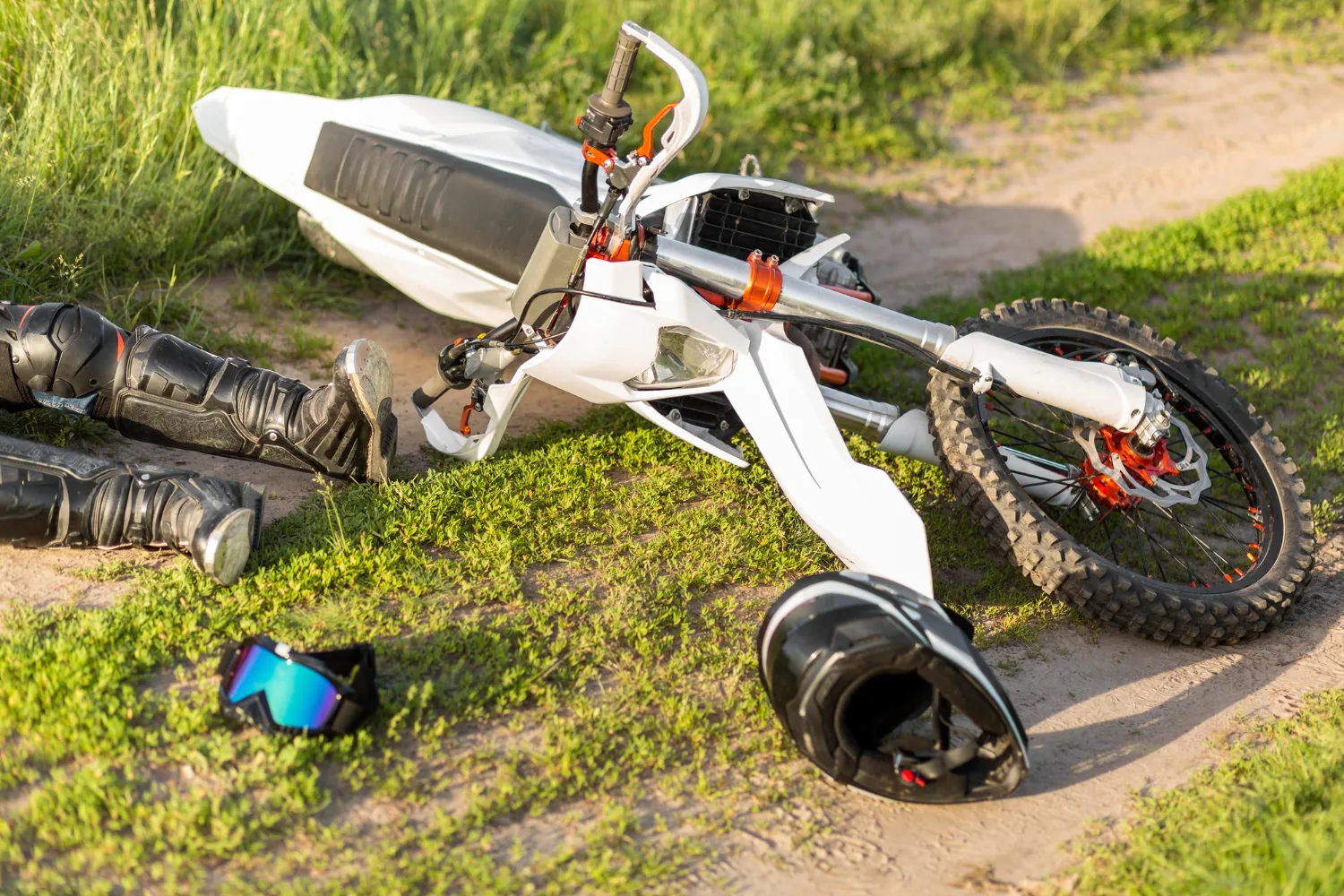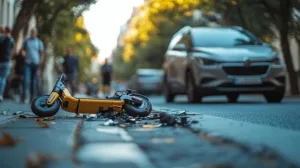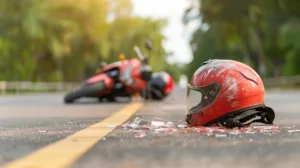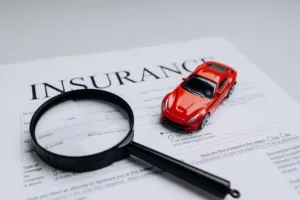Introduction – Why Urban Cyclists Need Legal Awareness
Cycling has become an increasingly popular mode of transportation in cities worldwide. It offers health benefits, reduces traffic congestion, and supports eco-friendly commuting. However, with more cyclists sharing roads with cars, buses, and pedestrians, city bike accidents are on the rise. Urban cyclists face unique risks, from navigating heavy traffic to dealing with infrastructure that isn’t always designed for safe biking.
In these situations, understanding your legal rights and responsibilities is essential. A motorbike accident attorney helps protect your rights after a crash, guiding you through the legal process to seek fair compensation for medical bills, lost wages, and other damages.
Knowing how the law protects cyclists and what steps to take after an accident can make the difference between a smooth recovery and a stressful, costly process. This article explores cyclist rights, motorist responsibilities, reporting procedures, compensation claims, and proactive measures every urban rider should know.
Common Causes of City Bike Accidents
City cycling often means maneuvering through busy streets, intersections, and unpredictable traffic. Accidents happen for a variety of reasons, and identifying common causes helps cyclists prepare for risks.
Collisions with Motorists
Motor vehicle collisions remain one of the leading causes of serious bike accidents. Drivers may fail to yield to cyclists, make unsafe lane changes, or open car doors without checking, leading to sudden and dangerous impacts.
Road Hazards and Poor Infrastructure
Potholes, debris, poorly marked bike lanes, and inadequate lighting all increase the likelihood of crashes. Unlike cars, bikes are far less forgiving of small obstacles, and riders are more vulnerable to injuries.
Cyclist and Pedestrian Interactions
Accidents don’t always involve cars. Cyclists sometimes collide with pedestrians, especially in congested urban areas where sidewalks, crosswalks, and bike paths intersect. Both cyclists and pedestrians must remain alert to avoid accidents.
Cyclist Rights in City Environments
Cyclists have the legal right to share the road with motorists, but with that right comes responsibility. Laws vary by city and state, but several general principles apply.
Right of Way Laws for Cyclists
Cyclists often have the same rights and responsibilities as motorists. This means obeying traffic signals, using designated lanes when available, and signaling turns. When motorists fail to respect a cyclist’s right of way, accidents occur.
Legal Protections in Traffic Accidents
In many jurisdictions, cyclists injured in accidents have the right to pursue compensation for medical bills, lost income, and damages. Laws are designed to ensure cyclists are not treated as second-class road users.
Responsibilities for Safe Riding
Alongside rights come responsibilities. Cyclists are expected to follow traffic laws, ride predictably, and take reasonable precautions to avoid accidents. A cyclist who ignores these duties may face reduced compensation in the event of an accident.
Motorist Responsibilities Toward Cyclists
Safe road-sharing requires mutual respect between motorists and cyclists. Drivers play a significant role in preventing accidents.
Duty of Care When Sharing the Road
Motorists are legally obligated to exercise caution when driving near cyclists. This includes maintaining a safe distance when passing, yielding at intersections, and avoiding distractions.
Common Traffic Violations Impacting Cyclists
Violations such as speeding, running red lights, and failing to check blind spots contribute significantly to cyclist injuries. Even minor negligence on the part of drivers can have devastating consequences for cyclists.
Legal Consequences for Negligent Driving
Drivers who fail to uphold their responsibilities may face liability for damages, fines, or even criminal charges in cases of reckless driving. These consequences emphasize the importance of vigilance when sharing the road with cyclists.
Steps to Take After a City Bike Accident
A bike accident can be overwhelming, but taking the right steps immediately afterward can protect your rights and strengthen any future claims.
Ensuring Immediate Safety
The first priority is safety. Move to a secure location if possible, check for injuries, and call emergency services when needed.
Accident Reporting Requirements
In many areas, accidents involving injuries or significant property damage must be reported to the authorities. Filing a report ensures an official record exists, which can be vital for compensation claims.
Collecting Evidence and Witness Details
Gathering information at the scene is crucial. Take photographs, record the driver’s details, and speak to any witnesses. This evidence may be essential later in proving fault or supporting a claim.
Legal Aspects of Compensation
Compensation after a bike accident can cover more than just medical bills. Understanding the categories of compensation available helps cyclists recover fully.
Medical Expenses and Injury Claims
Injured cyclists may be entitled to compensation for hospital bills, rehabilitation, and ongoing medical treatment. Even minor injuries can result in costly care.
Property Damage Recovery
Bicycles, gear, and personal belongings often suffer damage in accidents. Cyclists can pursue reimbursement for these costs in addition to injury claims.
Long-Term Compensation for Severe Injuries
Some accidents result in life-changing injuries. In such cases, compensation may include lost wages, reduced earning capacity, and damages for pain and suffering. These claims require thorough documentation and often legal guidance.
Accident Reporting and Documentation
Documentation plays a pivotal role in protecting cyclists’ rights after an accident.
When and How to File a Report
If police respond to the scene, they will file a report. Otherwise, cyclists may need to file one independently. Reports should include all relevant details about the incident.
Importance of Official Documentation
Accident reports, medical records, and receipts create a paper trail that supports compensation claims. Without these documents, proving fault or calculating damages becomes difficult.
Using Records to Support Claims
A strong claim relies on well-organized documentation. Keeping copies of all evidence, including communication with insurers, strengthens a cyclist’s position during negotiations or legal proceedings.
Preventive Measures for Cyclists
While accidents can’t always be avoided, cyclists can reduce risks by adopting proactive safety habits.
Following Traffic Laws
Cyclists should obey traffic lights, stop signs, and lane markings. Predictable riding helps motorists anticipate movements and reduces accident risks.
Using Safety Gear and Visibility Tools
Wearing helmets, reflective clothing, and using lights improves visibility and protection. These tools are vital in city environments where visibility is often limited.
Engaging in Defensive Riding Practices
Defensive cycling means anticipating potential hazards and staying alert to the behavior of motorists and pedestrians. This mindset significantly reduces the chances of an accident.
Final Thoughts
City bike accidents present unique challenges for urban cyclists. By understanding both their rights and responsibilities, cyclists can navigate city streets more safely and with greater confidence. In the event of an accident, knowing what steps to take—such as documenting the incident, reporting it properly, and pursuing compensation—ensures riders are protected.
Ultimately, safer cycling requires cooperation between cyclists and motorists. When both groups understand their legal obligations, city streets become safer for everyone. Legal awareness empowers cyclists not only to protect themselves after an accident but also to contribute to a culture of responsible road use.
If you’ve been involved in a city bike accident, reach out to us today—our team is here to protect your rights and guide you through your legal options.
Frequently Asked Questions (FAQs)
What should I do immediately after a city bike accident?
Ensure safety, call emergency services if needed, report the accident, and collect evidence at the scene.
Do cyclists have the same rights as motorists on city roads?
Yes, cyclists generally have the same rights and responsibilities as motorists, including obeying traffic laws and signals.
Can cyclists receive compensation for bike damage after an accident?
Yes, cyclists can pursue claims for property damage, including repairs or replacement of bicycles and gear.
What responsibilities do motorists have toward cyclists?
Motorists must maintain safe distances, yield at intersections, and exercise caution to avoid collisions with cyclists.
How can cyclists reduce their risk of accidents in cities?
By following traffic laws, wearing safety gear, using visibility tools, and practicing defensive riding strategies.





